The Rough Guide to France, 6th edition
Kate Baillie, Tim Salmon
France is known as a place that will delight the senses—and this Rough Guide will help you bathe in them all, from eyefuls of architecture to the sounds of la mer lapping against the shore, the touch of designer fabrics to the smells and tastes of some of the most renowned cuisine in the world. As authors Baillie and Salmon put it, "The pleasures of the palate run from the simplest picnic of crusty baguette, ham and cheese washed down by an inexpensive red wine through what must be the most elaborate take-away food in the world, available from practically every charcuterie; such basic regional dishes as cassoulet; the liver-destroying riches of Périgord and Burgundy cuisine; the fruits of the sea; extravagant pastries and ice cream cakes.... If you feel inadequate in the face of all this choice, never be afraid to ask advice, for most French people are true devotees, ever ready to explain the arcane mysteries to the uninitiated."
In France: The Rough Guide, the country's attractions are written up with creative flair and insightful advice, and the honest reviews of food and accommodations offer something for every traveler's budget. The coverage is complete with sections exploring history, cuisine, wine, literature, architectural terms, art, festivals, and politics. Bon voyage!
1858284155
The Rough Guide to Paris
Kate Baillie, Tim Salmon, Rachel Kaberry
INTRODUCTION
Its little wonder that so many wistful songs have been penned over the years about Frances capital, Paris. What city experiences could be more seductive than sitting in the gardens of Notre-Dame beneath the drifting cherry blossom, strolling along the riverside quais on a summer evening, sipping coffee and cognac in the early hours to the sound of the blues, or exploring the ancient alleyways and cobbled lanes of the Latin Quarter and Montmartre? Paris has no problem living up to the painted images and movie myths with which were all familiar.
Nor does Paris falter in its reputation as a great hive of artistic and intellectual activity. World-class art collections at the Louvre and Musée dOrsay, as well as the great many smaller museums devoted to individual artists and collectors, underscore an impressive roster of talents linked to the city, including Delacroix, Ingres, Seurat, Degas, Van Gogh, Picasso, Braque and Gris, to name but a few. The newly reopened Pompidou Centre embodies a cultural attitude that both proclaims Parisian cleverness and invites you to share in it. And it is only one of many grand and ground-breaking modern buildings the new Bibliothèque Nationale, the Institut du Monde Arabe, among others that assert modern architecture and design.
In fact, the whole city is something of a work of art. Two thousand years of shaping and reshaping have resulted in monumental buildings, sweeping avenues, grand esplanades and bridges. Many of its older buildings have survived intact, spared the ravages of flood and fire and saved from Hitlers intended destruction. Moreover, they survive with a sense of continuity and homogeneity, as new sits comfortably against a backdrop of old the glass Pyramid against the grand fortress of the Louvre, the Column of Liberty against the Opera Bastille. Time has acted as judge, as buildings once swathed in controversy the Eiffel Tower, the Sacre-Cur, the Pompidou Centre have in their turn become symbols of the city. Yet for all the tremendous pomp and magnificence of its monuments, Paris operates on a very human scale, with exquisite, secretive little nooks tucked away from the Grands Boulevards and very definite little communities revolving around games of boules and the local boulangerie and café.
1858286816
Absolute Power
David Baldacci
Can the President get away with murder? The fictional answer to this question results in a fast-paced page turner that combines political intrigue with gritty, hard-boiled suspense
0446603589
Total Control
David Baldacci
Successful lawyer Sidney Archer finds her life turned upside down when her beloved husband is killed in a fiery plane crash, a nightmare that escalates when she discovers that the FBI believes that her husband was responsible for the bombing—and that he might still be alive. Tour.
0446520950
Total Control
David Baldacci
Successful lawyer Sidney Archer finds her life turned upside down when her beloved husband is killed in a fiery plane crash, a nightmare that escalates when she discovers that the FBI believes that her husband was responsible for the bombing—and that he might still be alive. Simultaneous.
1570424632
The Winner
David Baldacci
From the author of the phenomenally bestselling "Absolute Power" and "Total Control" comes a thrilling new novel of suspense and excitement. When LuAnn Tyler is asked to be part of a crooked lottery scheme, she refuses, even though it would mean millions of dollars. But when she is framed for murder, the single mother is forced to participate. Ten years later, it all comes back to haunt her Major national media ads & publicity (Espionage/Thriller)
0446522597
British Library Souvenir Guide
Nicolas Barker
This guide introduces the Library's major treasures including illuminated manuscripts from east and west, historical documents, maps, literary and music manuscripts, many of which are on display in the John Ritblat Gallery - Treasures of the British Library and the Pearson Gallery of Living Words.
0712345868
|
Great Lodges of the National Parks: The Companion Book to the PBS Television Series
Christine Barnes
Stand amid soaring Douglas fir in the great hall of Glacier Park Lodge or sit in the setting sun and gaze into the Grand Canyon at El Tovar. This beautiful gift book will transport you to the majestic lodges of our national parks to relive the glory of past vacations or plan adventures anew. This book and the PBS television series of the same title (to air in spring 2002) take armchair travelers into these architectural wonders and explore the surrounding natural beauty of our national parks. Lodges, wildlife, and stunning vistas are showcased in 175 full-color and black-and-white photographs, along with historical documents from the PBS series. In his introduction, Richard Moe, president of the National Trust for Historic Preservation, offers a call to preserve this national heritage, and a portion of the proceeds from the sale of this book go toward the rehabilitation of these magnificent buildings.
0965392457
The Rough Guide to Italy, 4th edition
Ros Belford, Martin Dunford, Celia Woolfrey
INTRODUCTION
Of all European countries, Italy is perhaps the hardest to classify. It is a modern, industrialized nation, with companies like Fiat and Olivetti market- leaders in their field. It is the harbinger of style, its designers leading the way with each season's fashions. But it is also, to an equal degree, a Mediterranean country, with all that that implies. Agricultural land covers much of the country, a lot of it, especially in the South, still owned under almost feudal conditions. In towns and villages all over the country, life grinds to a halt in the middle of the day for a siesta, and is strongly family-oriented, with an emphasis on the traditions and rituals of the Catholic Church which, notwithstanding a growing scepticism among the country's youth, still dominates people's lives here to an immediately obvious degree.
Above all Italy provokes reaction. Its people are volatile, rarely indifferent to anything, and on one and the same day you might encounter the kind of disdain dished out to tourist masses worldwide, and an hour later be treated to embarrassingly generous hospitality. If there is a single national characteristic, it's to embrace life to the full: in the hundreds of local festivals taking place across the country on any given day, to celebrate a saint or the local harvest; in the importance placed on good food; in the obsession with clothes and image; and above all in the daily domestic ritual of the collective evening stroll or passeggiata - a sociable affair celebrated by young and old alike in every town and village across the country.
Italy only became a unified state in 1861 and, as a result, Italians often feel more loyalty to their region than the nation as a whole - something manifest in different cuisines, dialects, landscape, and often varying standards of living. There is also, of course, the country's enormous cultural legacy: Tuscany alone has more classified historical monuments than any country in the world; there are considerable remnants of the Roman Empire all over the country, notably of course in Rome itself; and every region retains its own relics of an artistic tradition generally acknowledged to be among the world's richest.
Yet there's no reason to be intimidated by the art and architecture. If you want to lie on a beach, there are any number of places to do it: unlike, say, Spain, development has been kept relatively under control, and many resorts are still largely the preserve of Italian tourists. Other parts of the coast, especially in the south of the country, are almost entirely undiscovered. Beaches are for the most part sandy, and doubts about the cleanliness of the water have been confined to the northern part of the Adriatic coast and the Riviera. Mountains, too, run the country's length - from the Alps and Dolomites in the north right along the Apennines, which form the spine of the peninsula - and are an important reference-point for most Italians. Skiing and other winter sports are practised avidly, and in the five national parks, protected from the national passion for hunting, wildlife of all sorts thrives.
Italy's regional differences: the North and the South Italy breaks down into twenty regions, which in turn divide into different provinces. Some of these regional boundaries reflect long-standing historic borders, like Tuscany, Lombardy or the Veneto; others, like Friuli-Venezia Giulia or Molise, are more recent administrative divisions, often established in recognition of quite modern distinctions. But the sharpest division is between North and South. The North is one of the most advanced industrial societies in the world, a region that despite recent hiccups is one of extraordinary economic dynamism. Its people speak Italian with the cadences of France or Germany and its "capital", Milan, is a thoroughly European city. The South, derogatively known as il mezzogiorno, begins somewhere between Rome and Naples, and is by contrast one of the economically most depressed areas in Europe; and its history of absolutist regimes often seems to linger in the form of the spectre of organized crime and the remote hand of central government in Rome.
The economic backwardness of the South is partly the result of the historical neglect to which it was subjected by various foreign occupiers. But it is also the result of the deliberate policy of politicians and corporate heads to industrialize the North while preserving the underdeveloped South as a convenient reservoir of labour. Italy's industrial power and dynamism, based in the North, has been built on the back of exploited southerners who emigrated to the northern industrial cities of Turin, Milan and Genoa in their millions during the Fifties and Sixties. Even now, Milan and Turin have very sizeable populations of meridionali - southerners - working in every sector of the economy.
This north-south divide is something you'll come up against time and again, wherever you're travelling. To a northerner the mere mention of Naples - a kind of totem for the South - can provoke a hostile response; and you may notice graffiti in northern cities against terroni (literally "those of the land"), the derogatory northern nickname for southerners. In recent years this hostility has been articulated through the rise of the Lega Nord, who have campaigned against southern immigration to the North and promoted the future independence of northern Italy from the South.
Oddly enough, the Lega Nord's campaign against the entrenchment and vested interests of the Italian political establishment, not to mention organized crime and the Mafia (whose power has over recent years spread to the north of the country), has to some extent backfired, in that the north-south rift has become partly diffused by the tangentopoli ("bribesville") corruption scandals - especially given that the centre of the whole affair was, after all, Milan itself. Most northern Italians have been forced to revise their simplistic view of the South as a drain on the country's resources, and look to sort out the problems in their own political backyard; and in turn cities like Naples, previously a focus of Camorra corruption, have begun to clean up their act, too. The massive political upheavals of the late Eighties and early Nineties seem to have given most Italians a greater sense of unity than ever before, if only by virtue of their opposition to the old political establishment. Whether this collective outrage will carry through into anything more permanent, however, is anybody's guess.
1858284139
A Framework for Web Science
Tim Berners-Lee, Wendy Hall, James, A Hendler
A Framework for Web Science sets out a series of approaches to the analysis and synthesis of the World Wide Web, and other web-like information structures. A comprehensive set of research questions is outlined, together with a sub-disciplinary breakdown, emphasising the multi-faceted nature of the Web, and the multi-disciplinary nature of its study and development. These questions and approaches together set out an agenda for Web Science, the science of decentralised information systems. Web Science is required both as a way to understand the Web, and as a way to focus its development on key communicational and representational requirements. A Framework for Web Science surveys central engineering issues, such as the development of the Semantic Web, Web services and P2P. Analytic approaches to discover the Web's topology, or its graph-like structures, are examined. Finally, the Web as a technology is essentially socially embedded; therefore various issues and requirements for Web use and governance are also reviewed. A Framework for Web Science is aimed primarily at researchers and developers in the area of Web-based knowledge management and information retrieval. It will also be an invaluable reference for students in computer science at the postgraduate level, academics and industrial practitioners.
1933019336
The Bartender's Guide
Peter Bohrmann
Short, long, hot, cold, shaken, stirred, alcoholic or non-alcoholic - The Bartender's Guide features over 1400 drink recipes In all. Comprehenslve and colourful, this comprehensive guide includes hundreds of drinks recipes based on brandy, whiskey, vodka, gin, rum, tequila, wine, champagne, liqueurs, calvados, and non-alcoholic drinks. From Martinis to Mudslides to Margarltas - every conceivable ingredient and combination is covered. Essential for every bar, the book features special sections concerning bar equipment, glassware, mixing te and garnishing. Also included is a complete glossary with important bar and cocktaii terminology.
1840652500
|
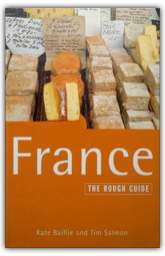
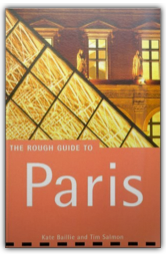
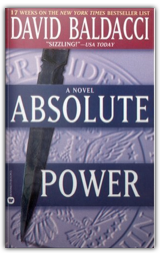
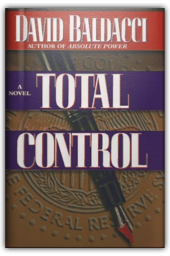
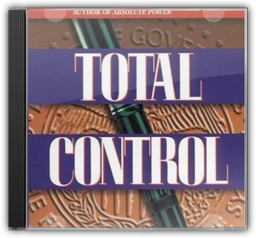
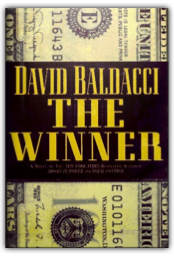
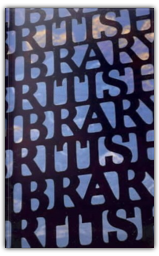
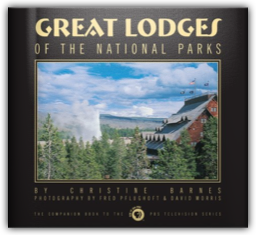
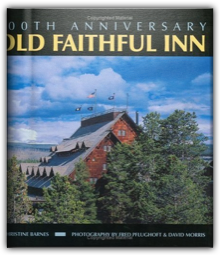
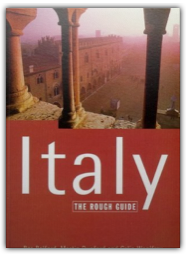
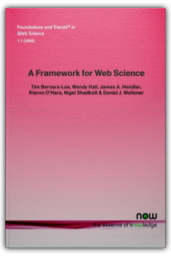
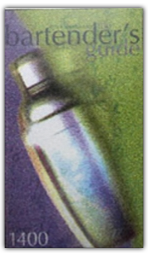


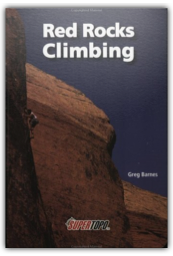
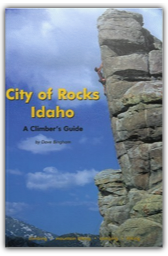
 Made with Delicious Library
Made with Delicious Library